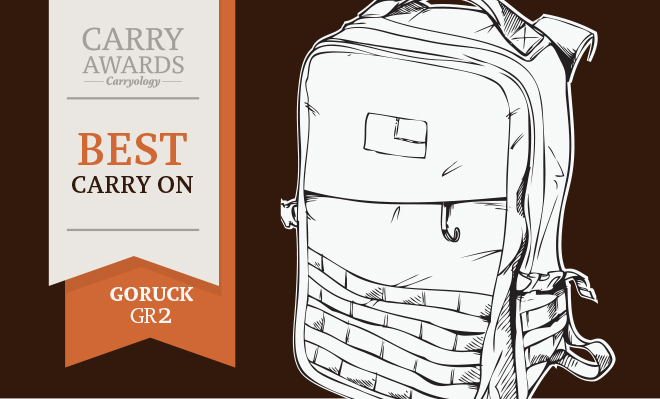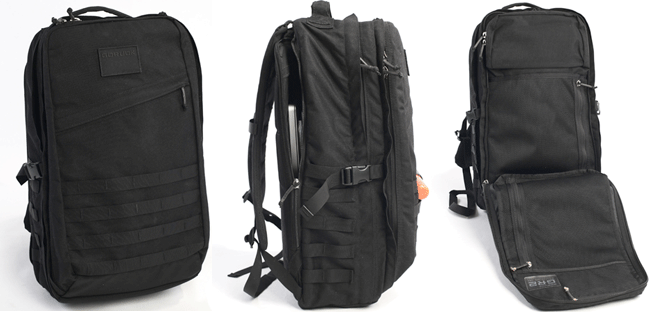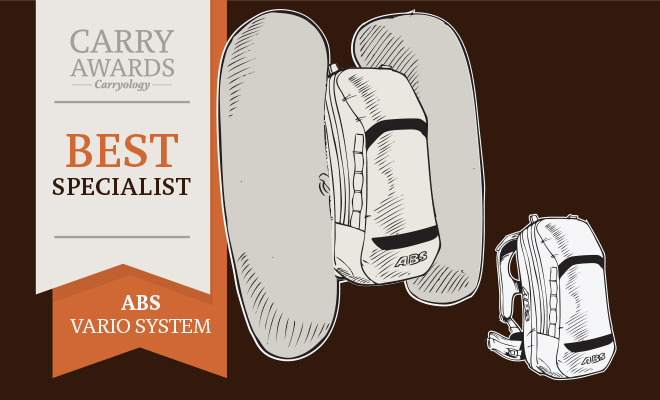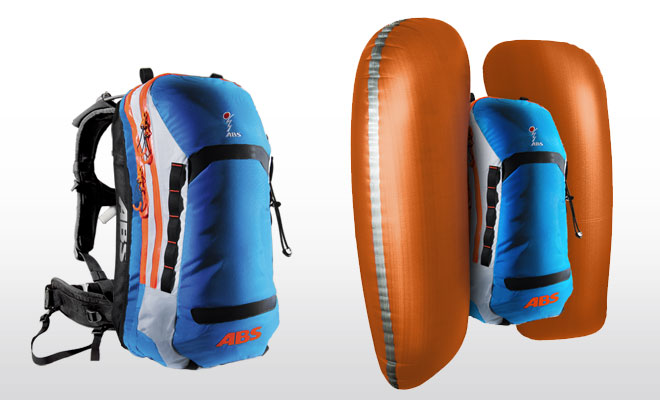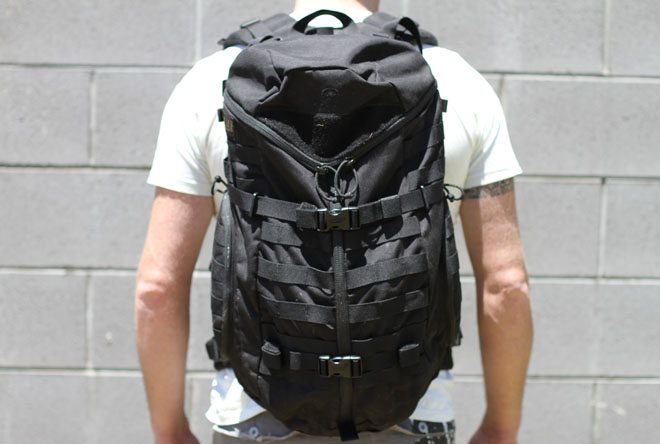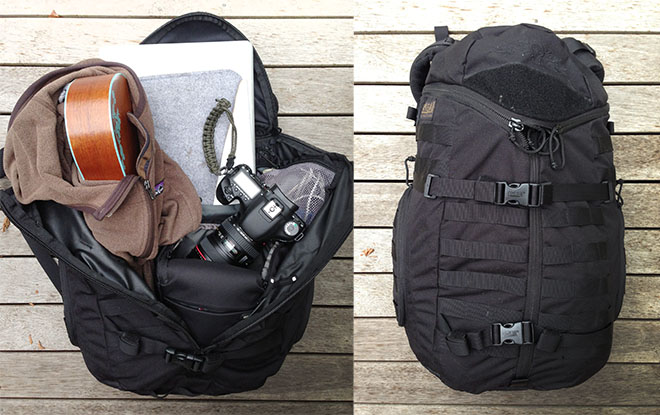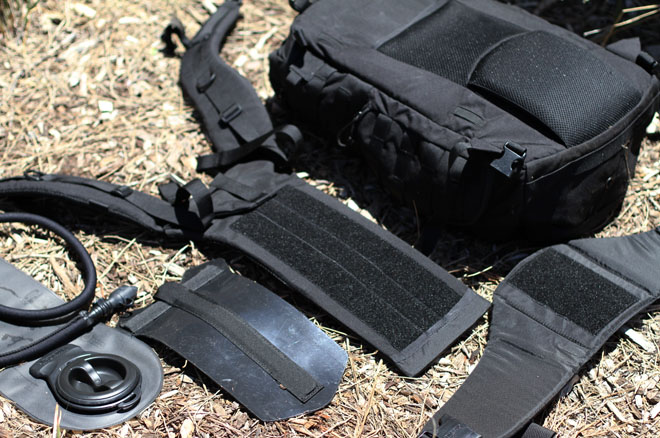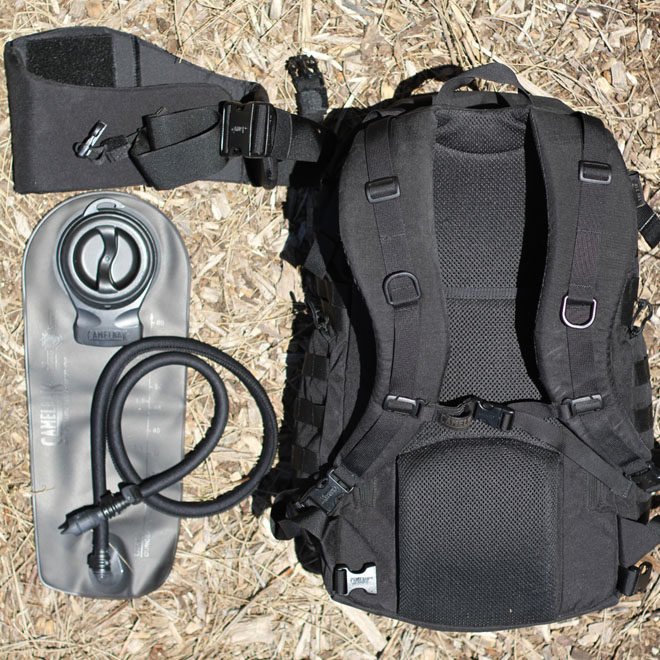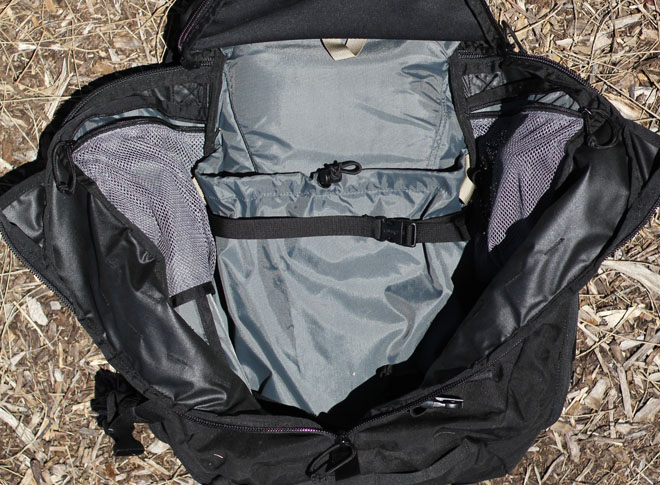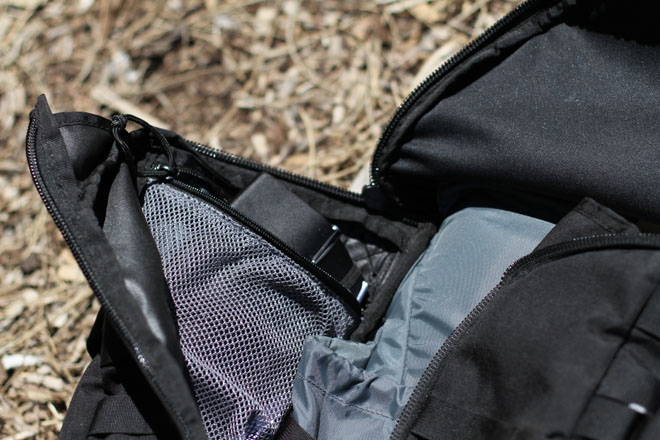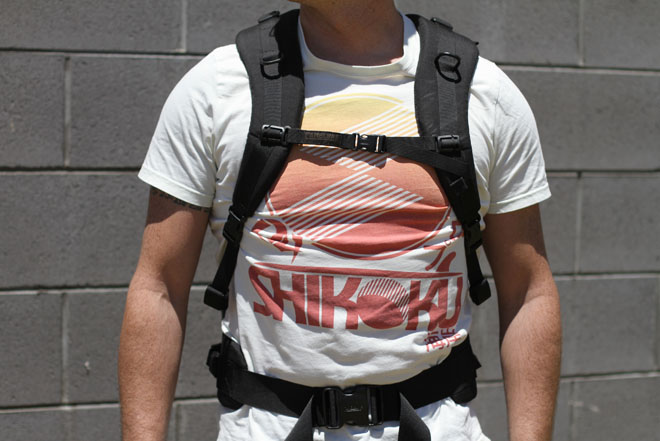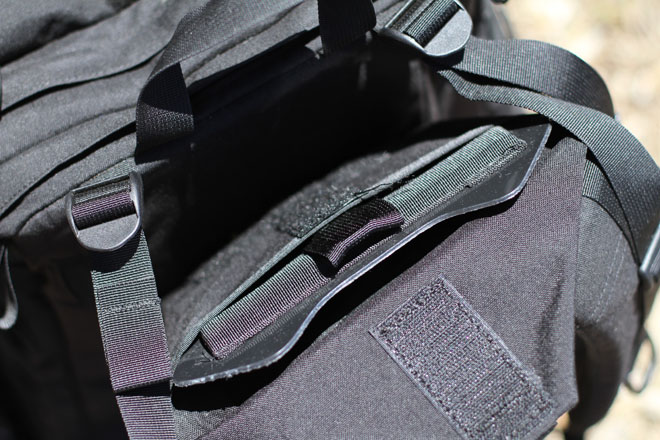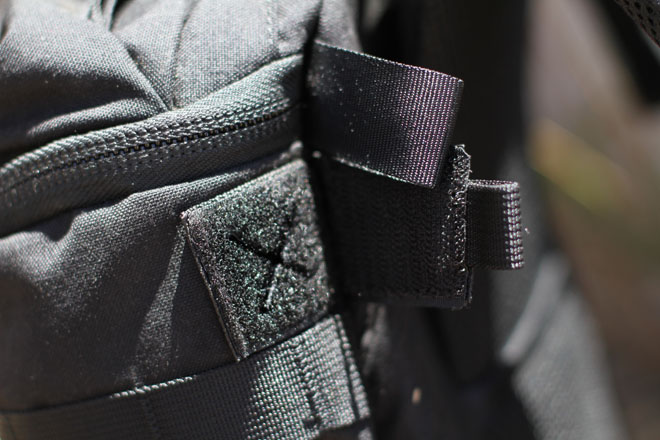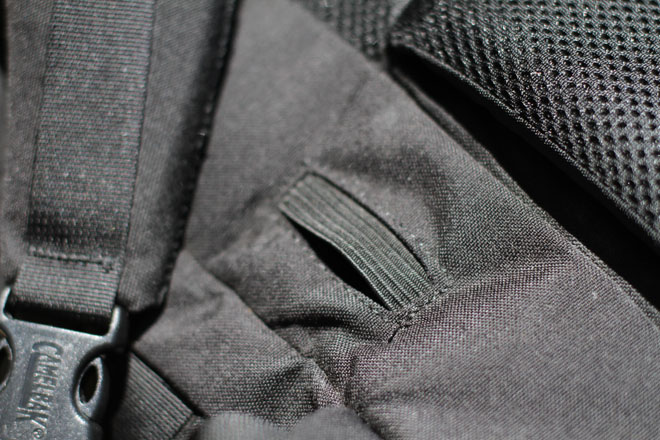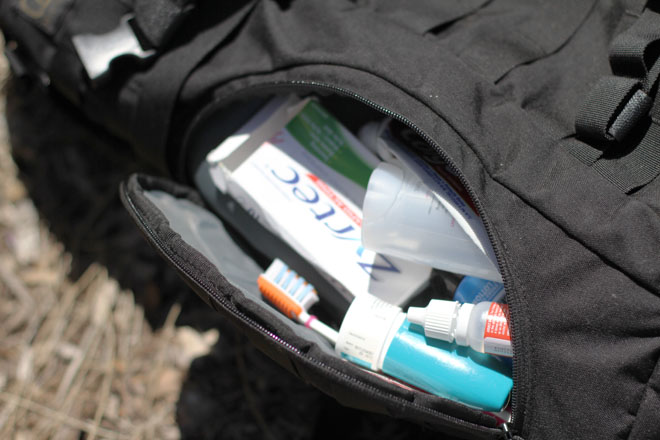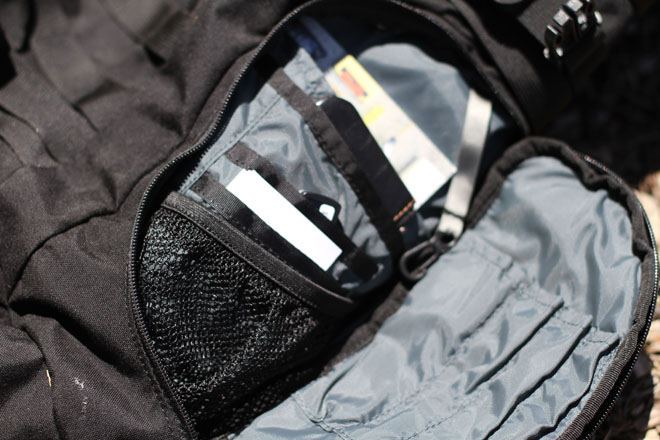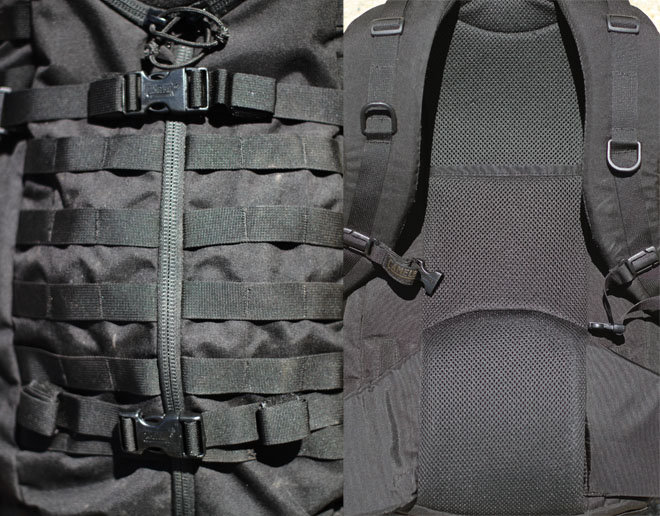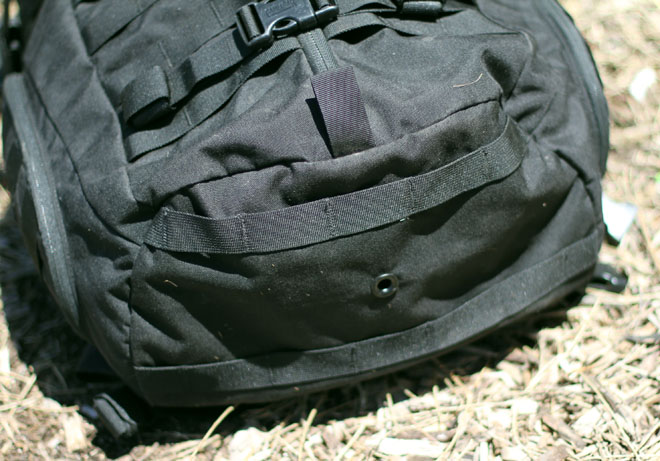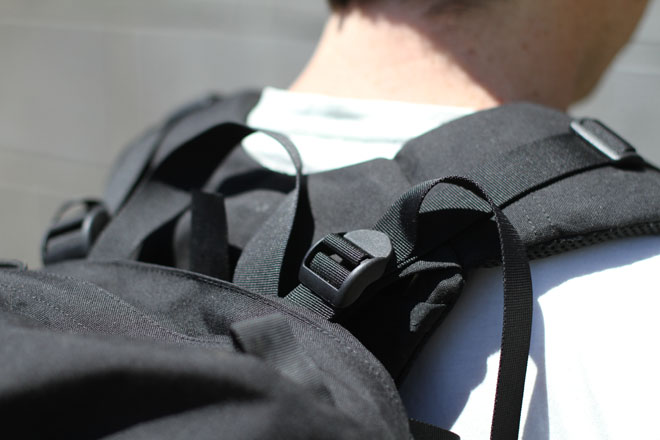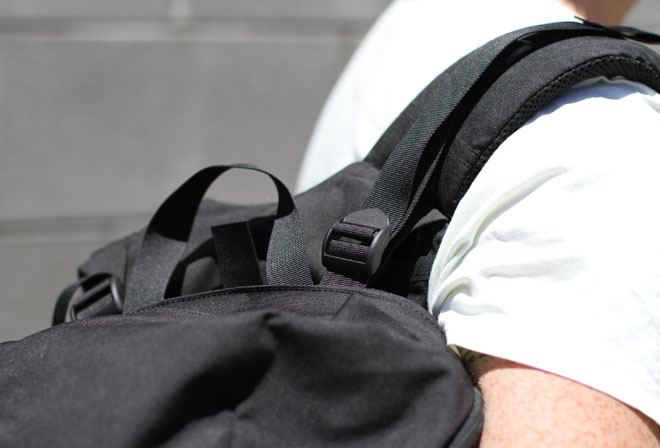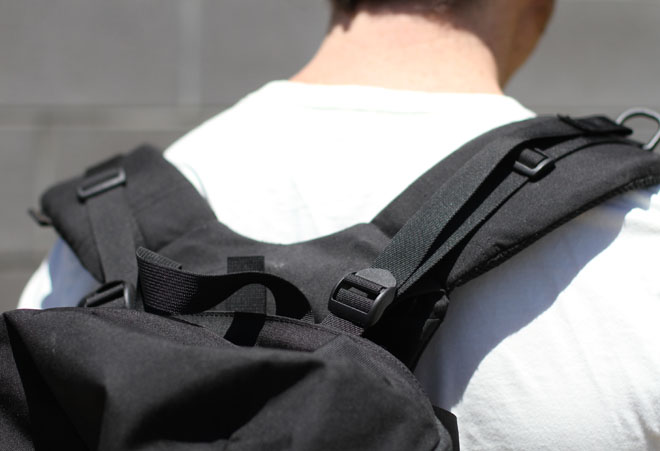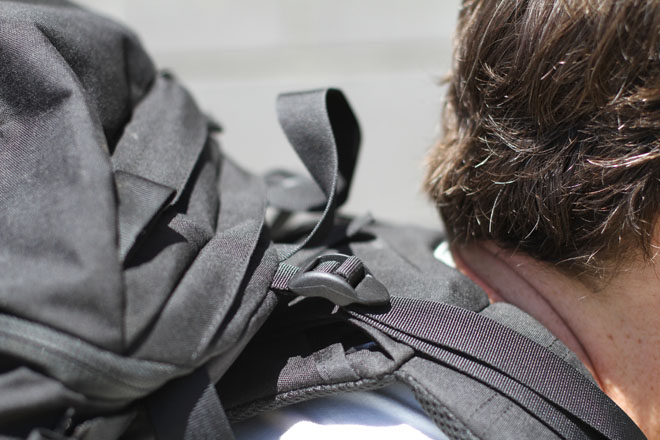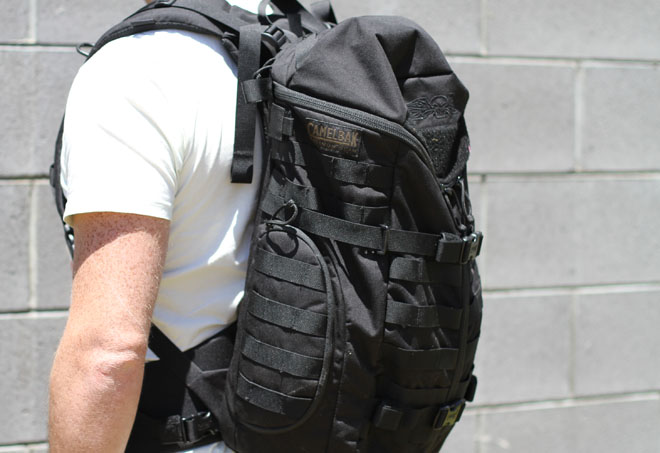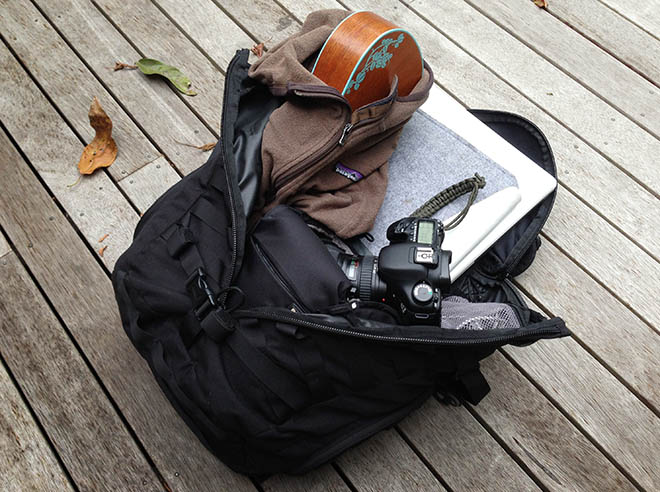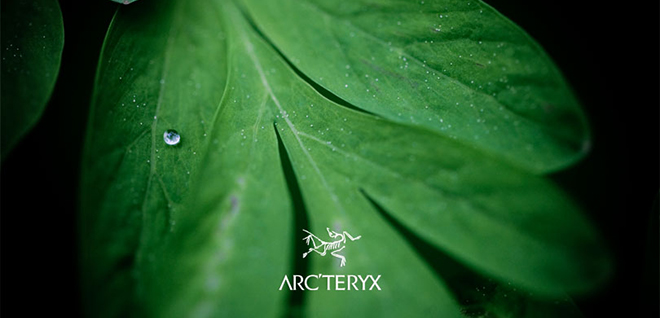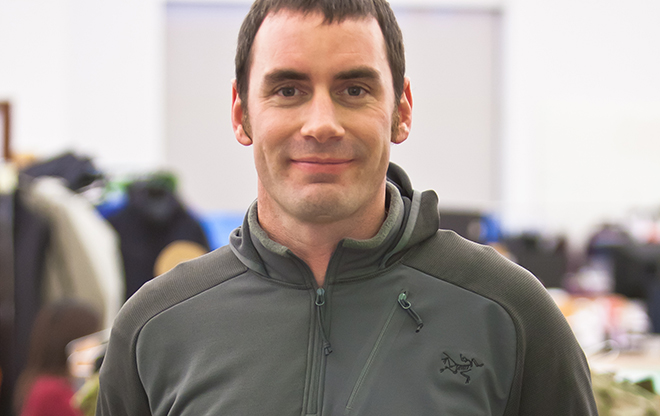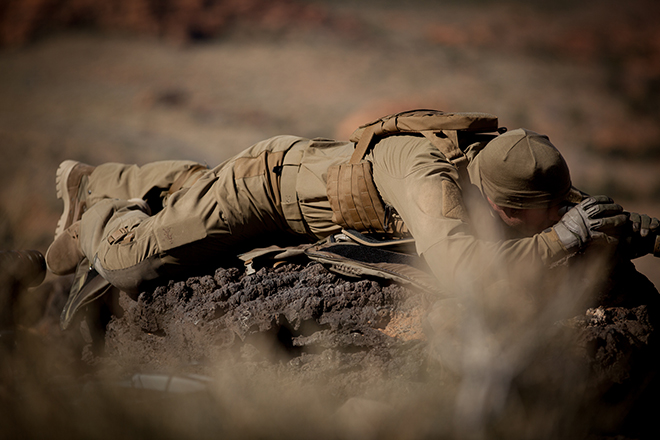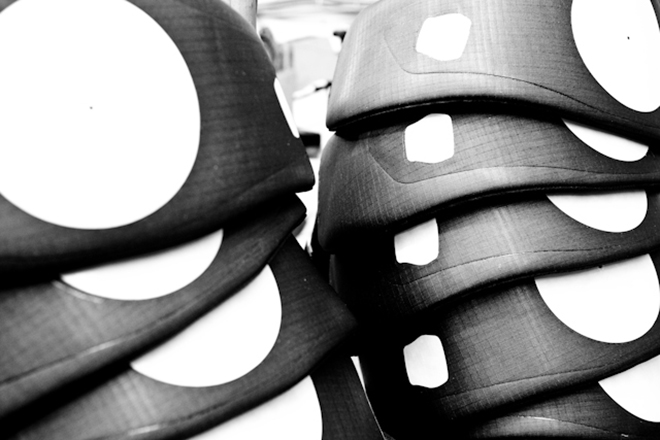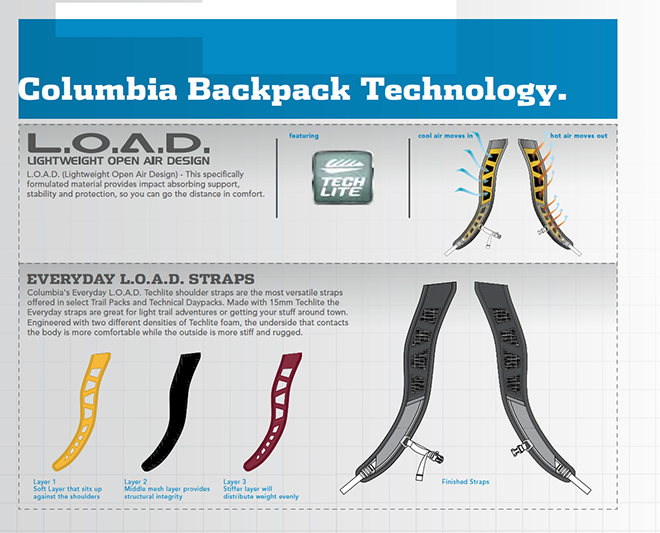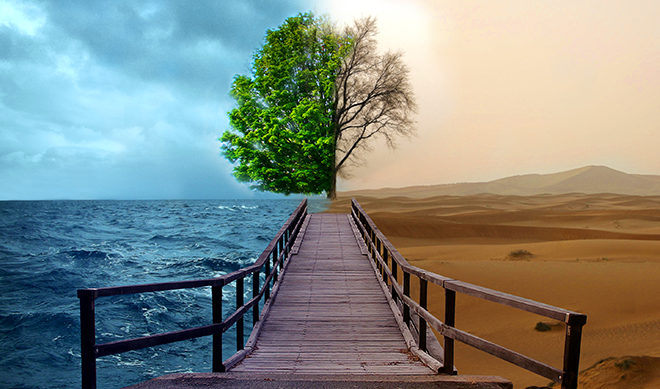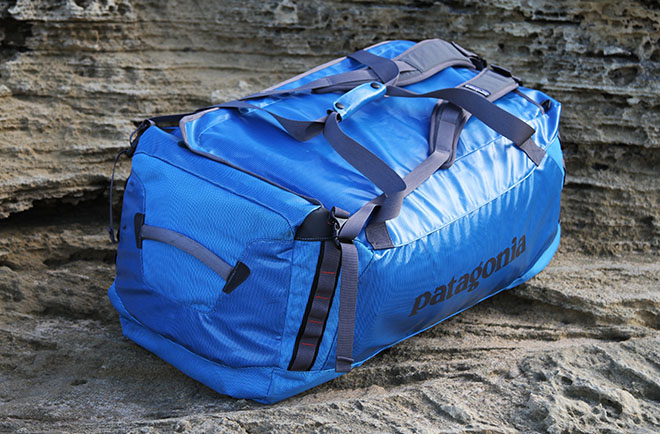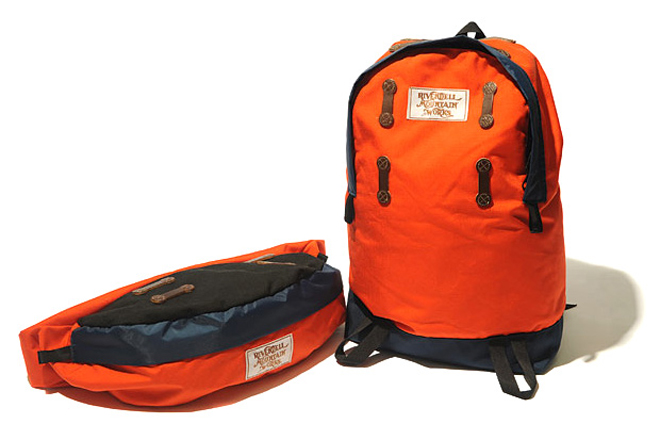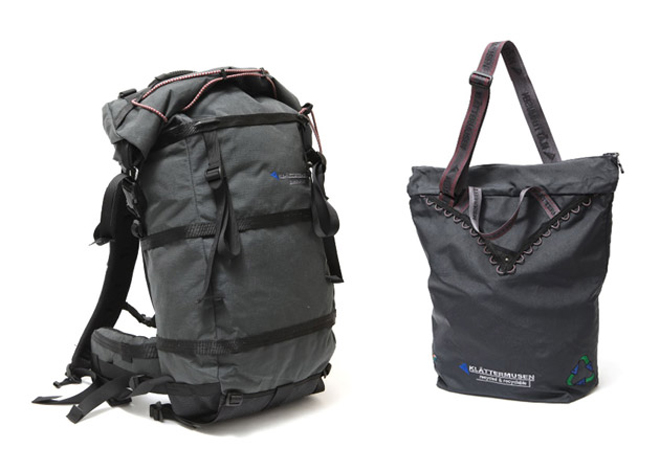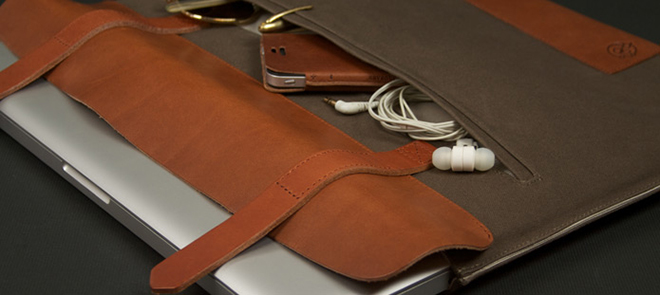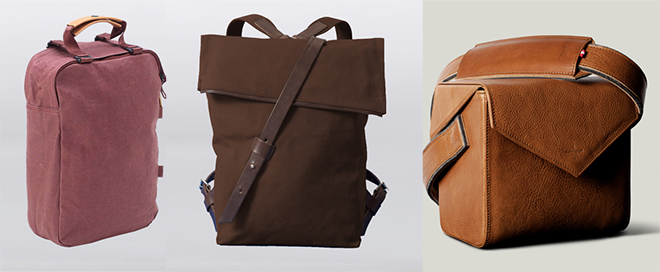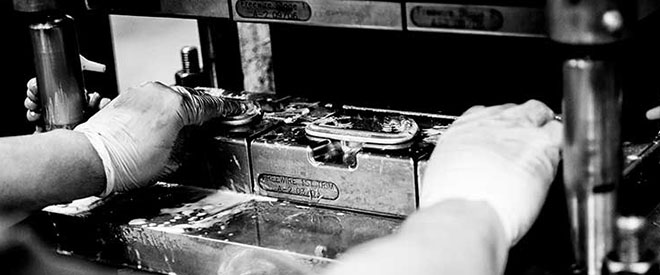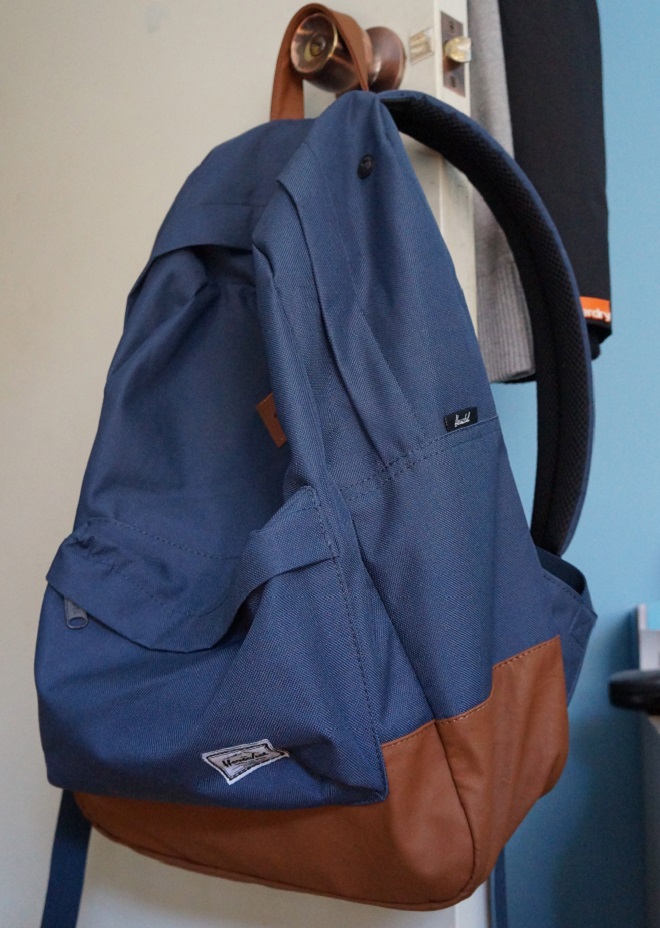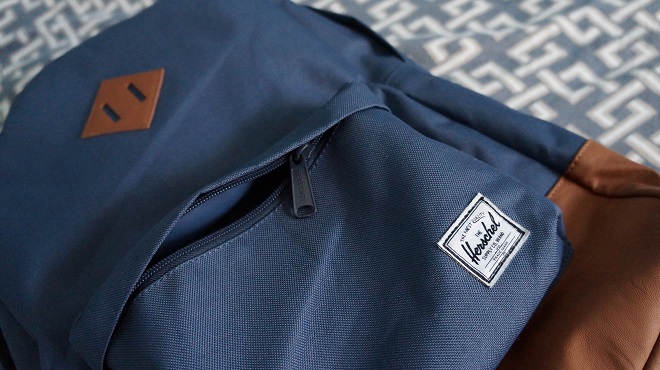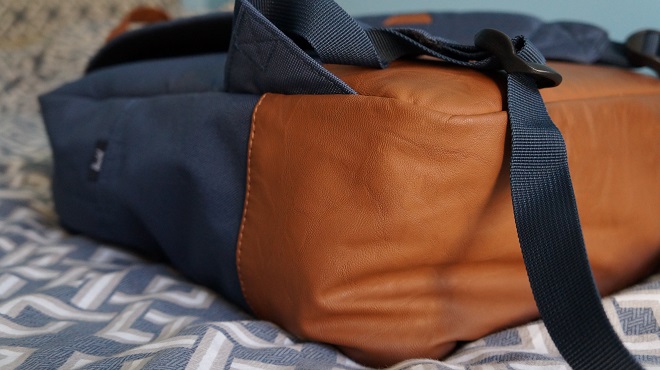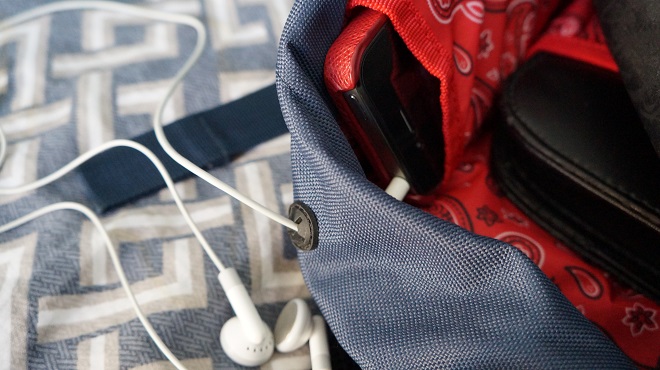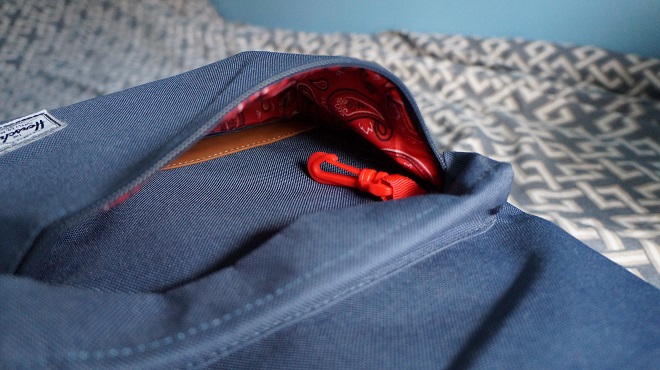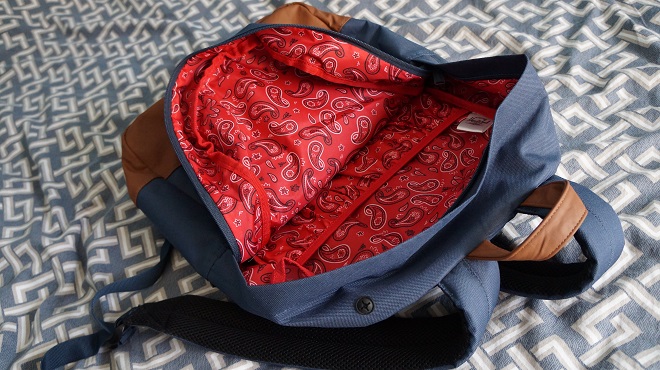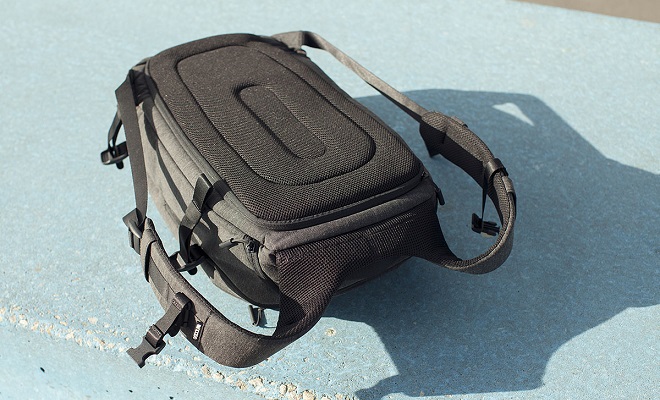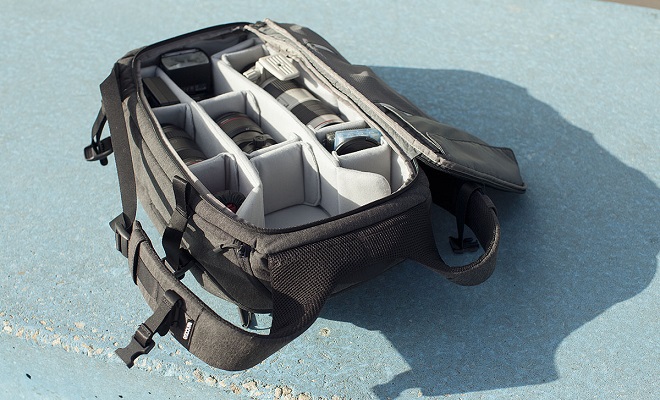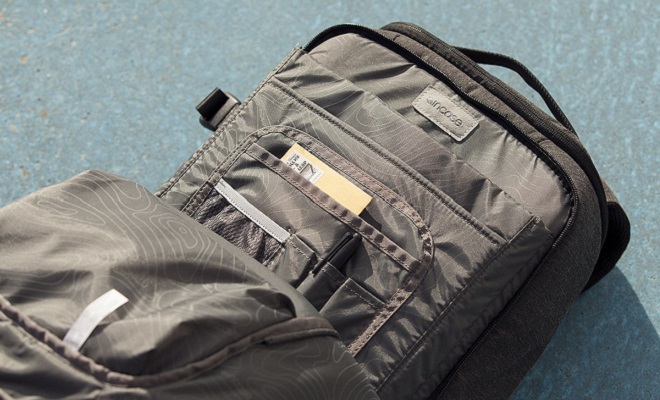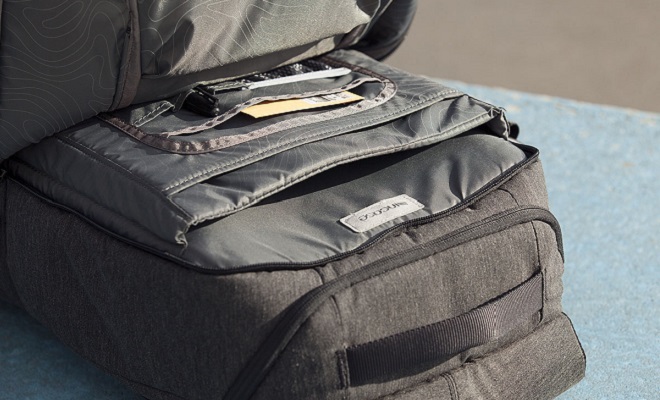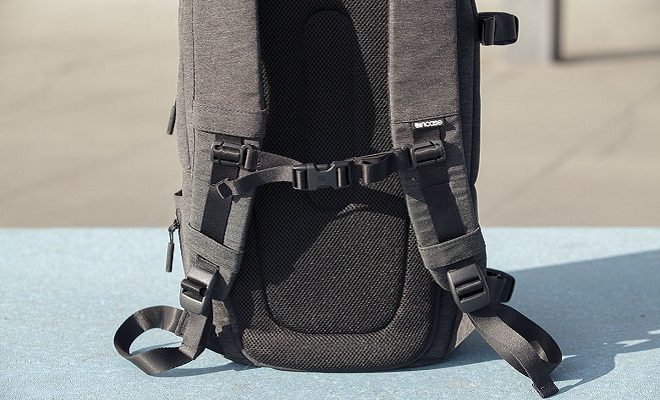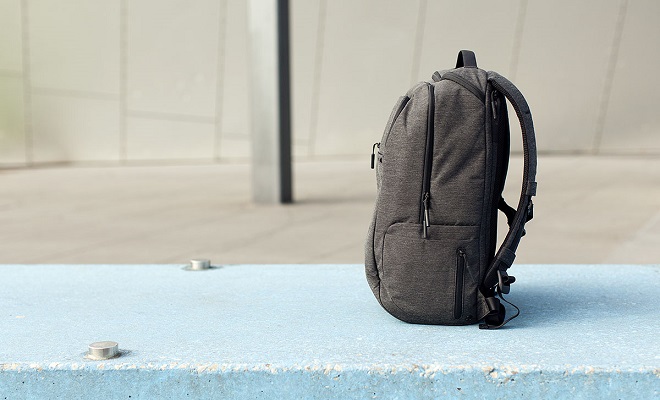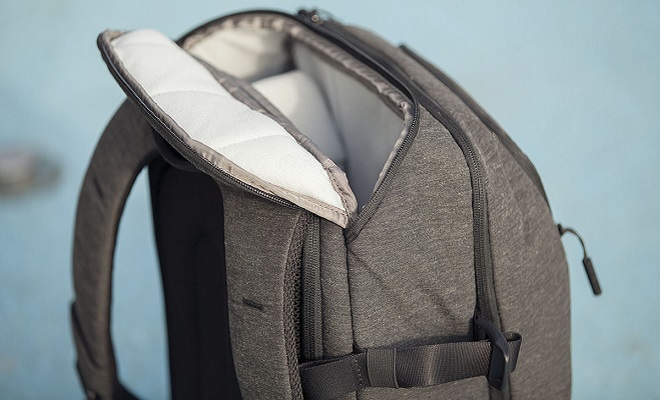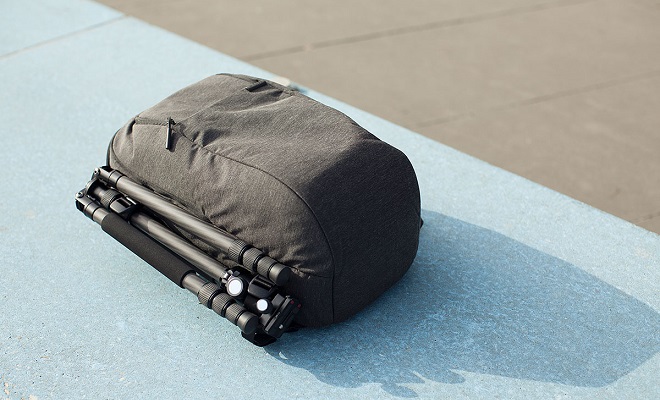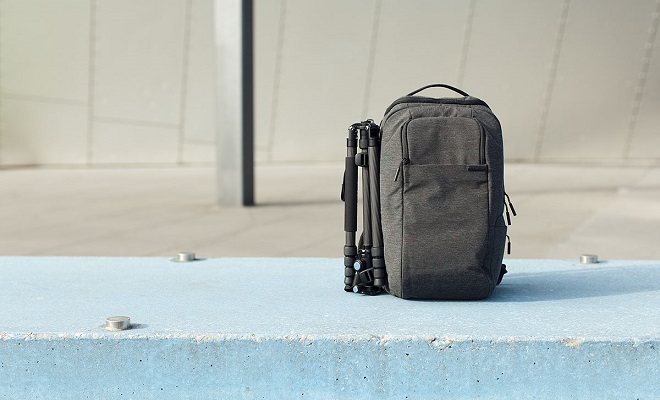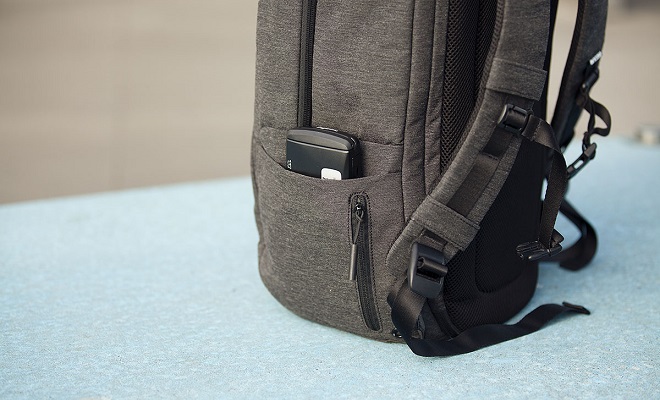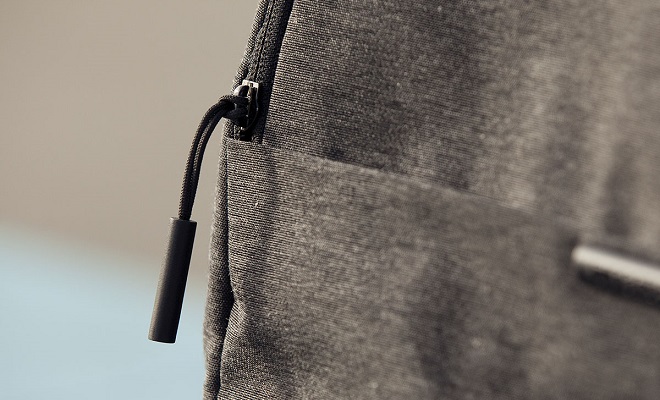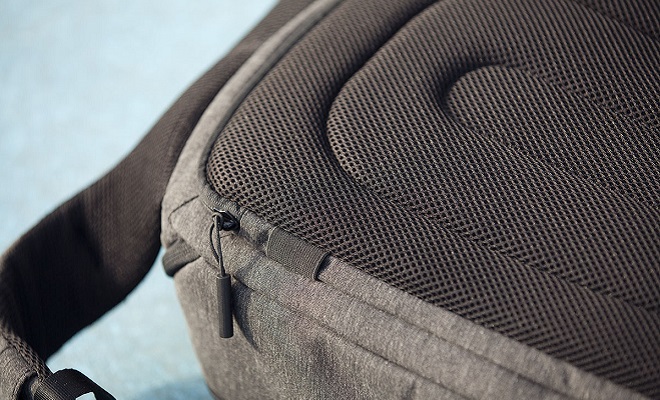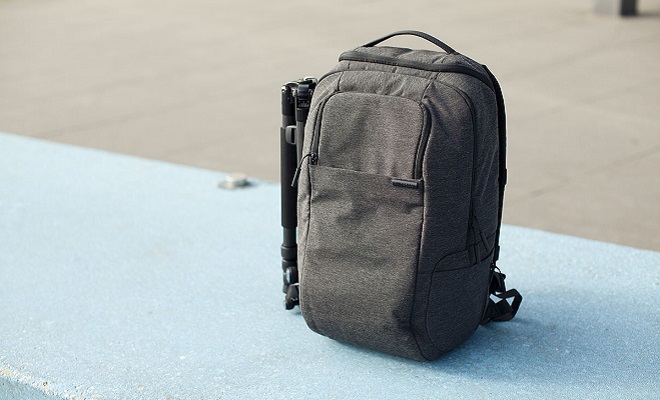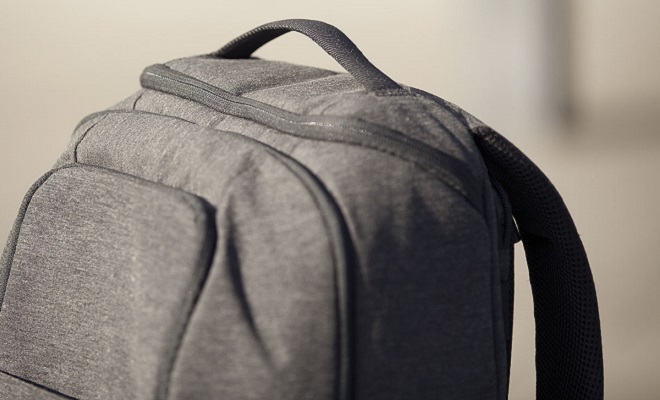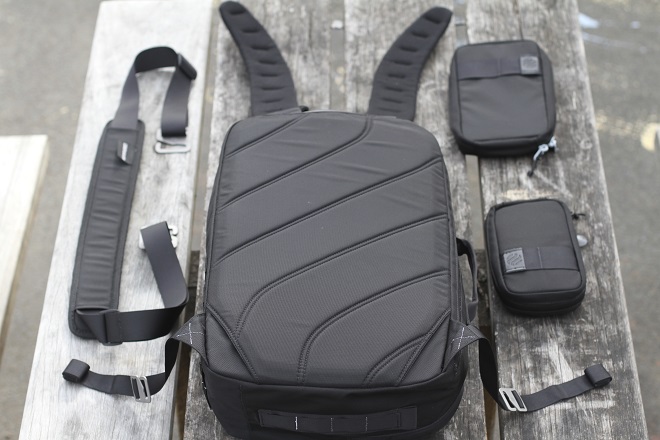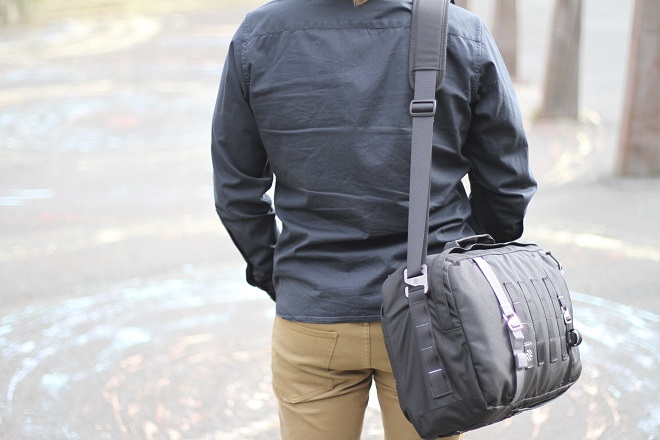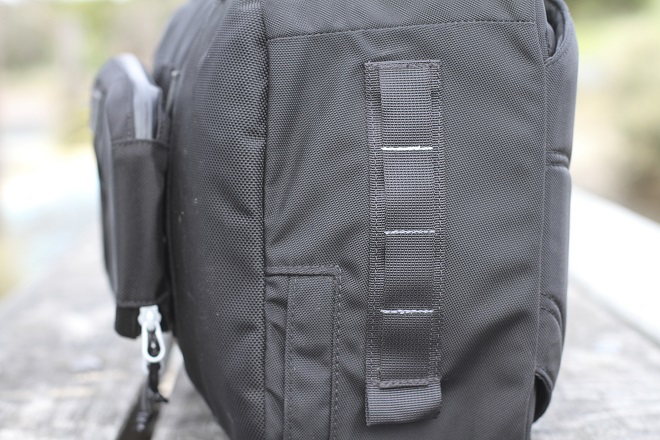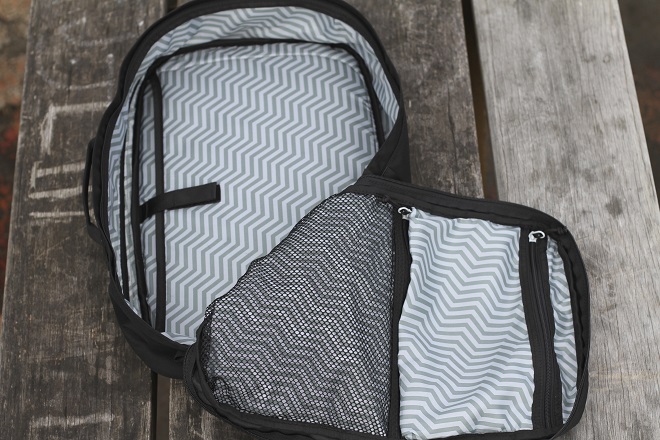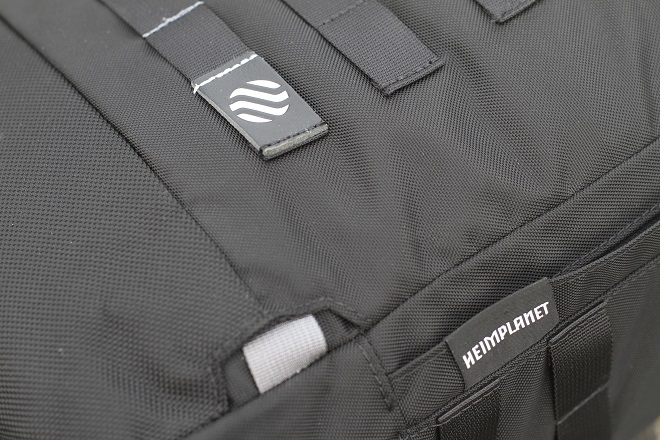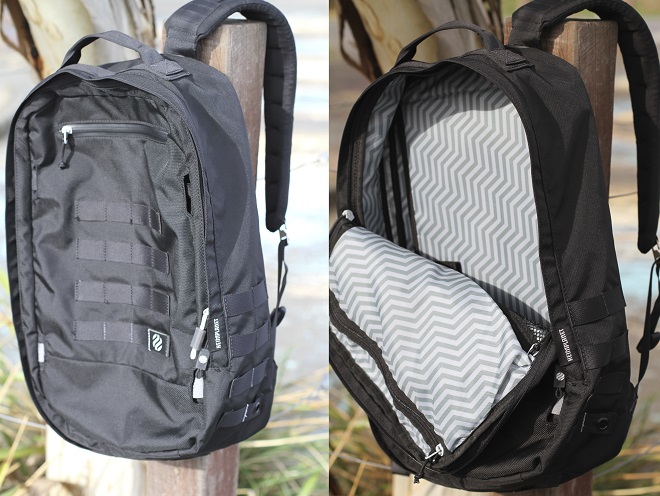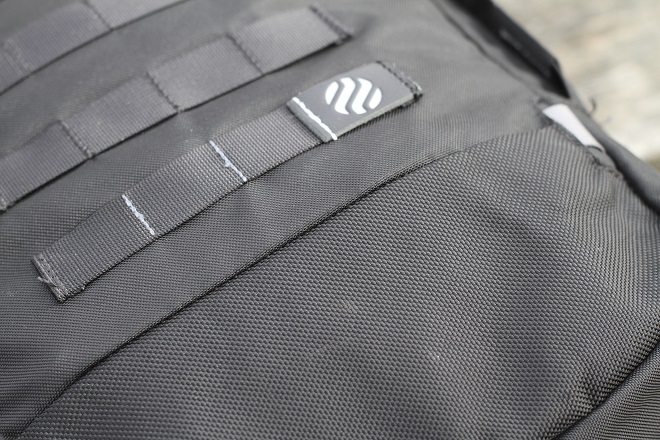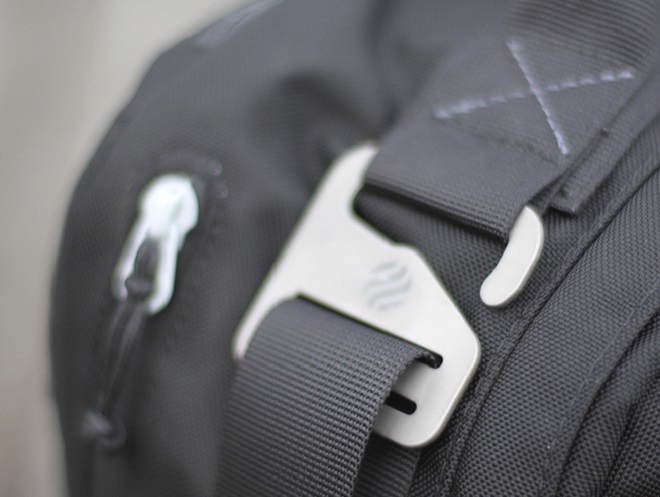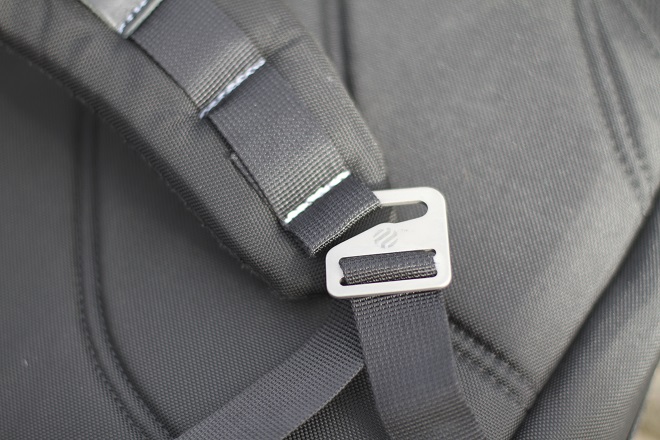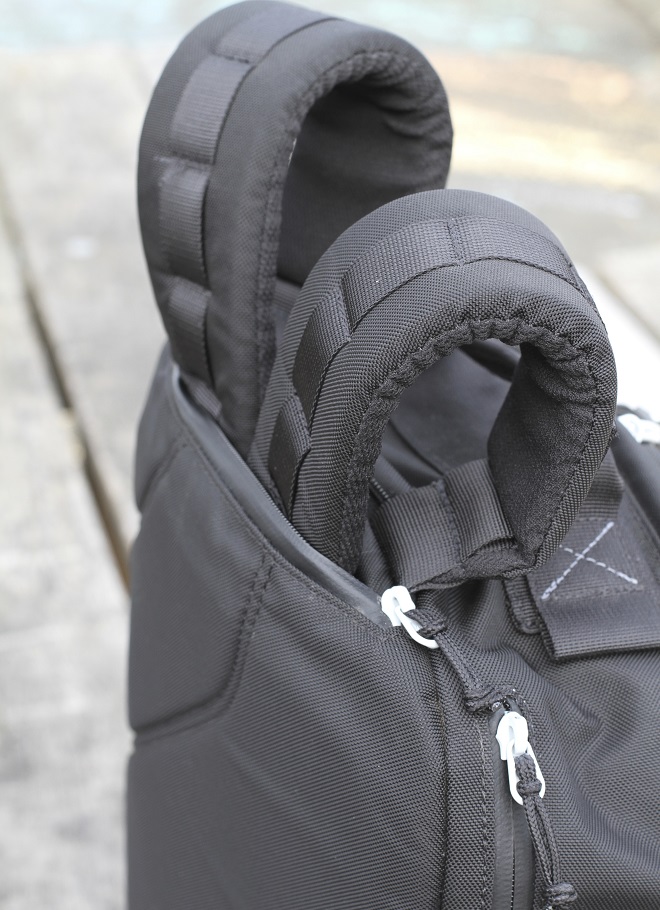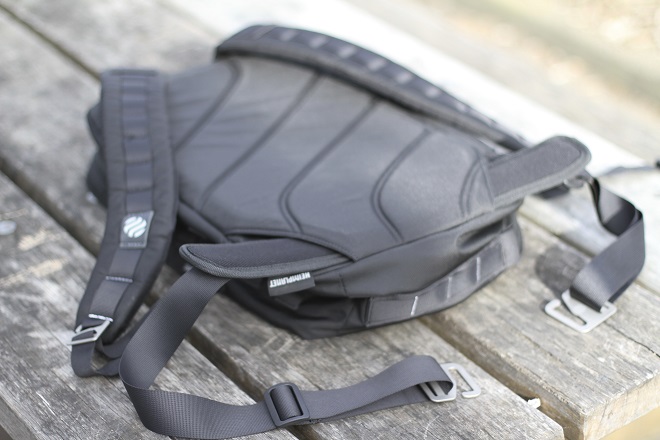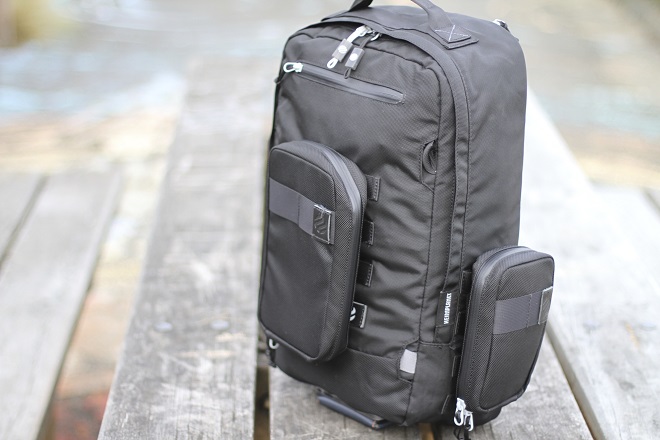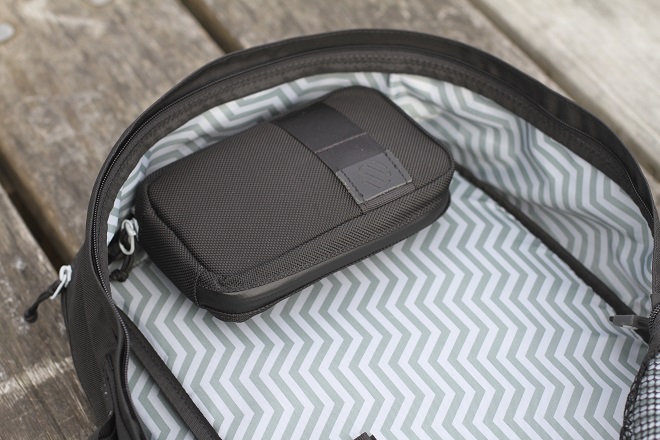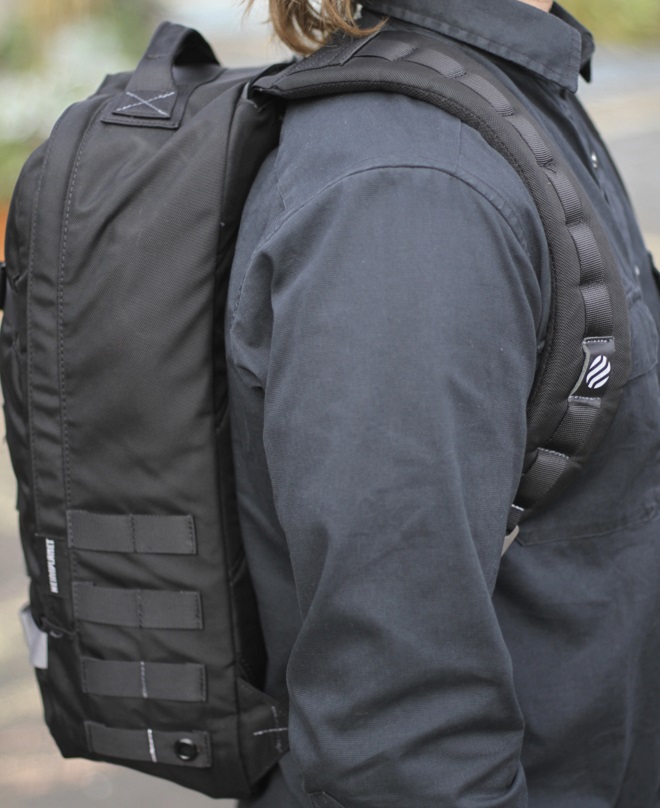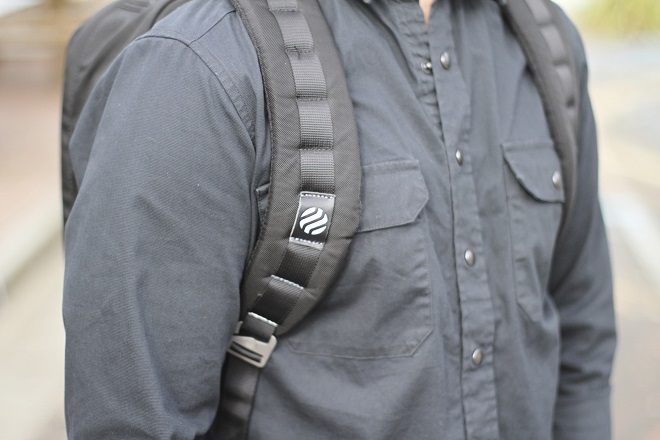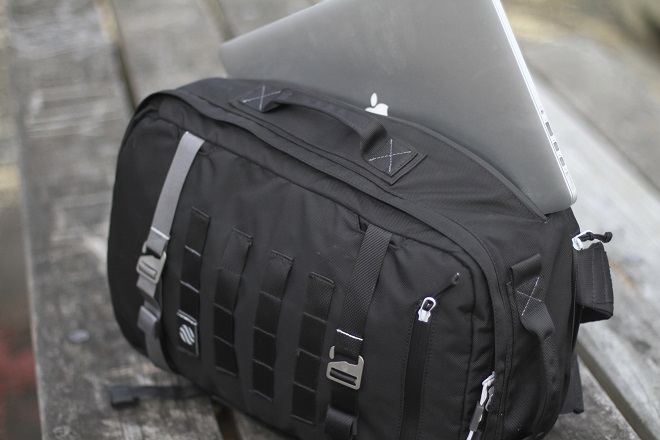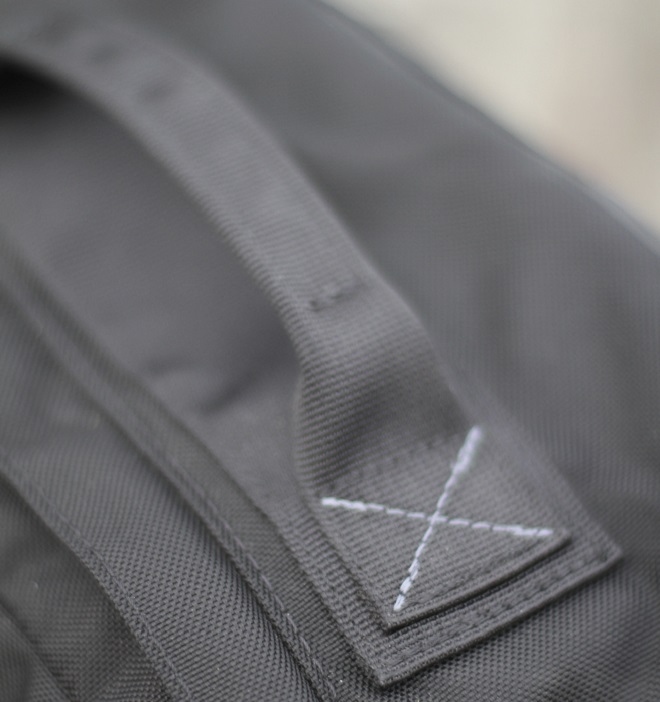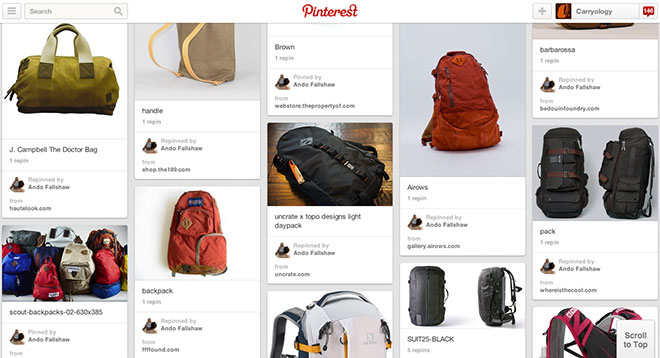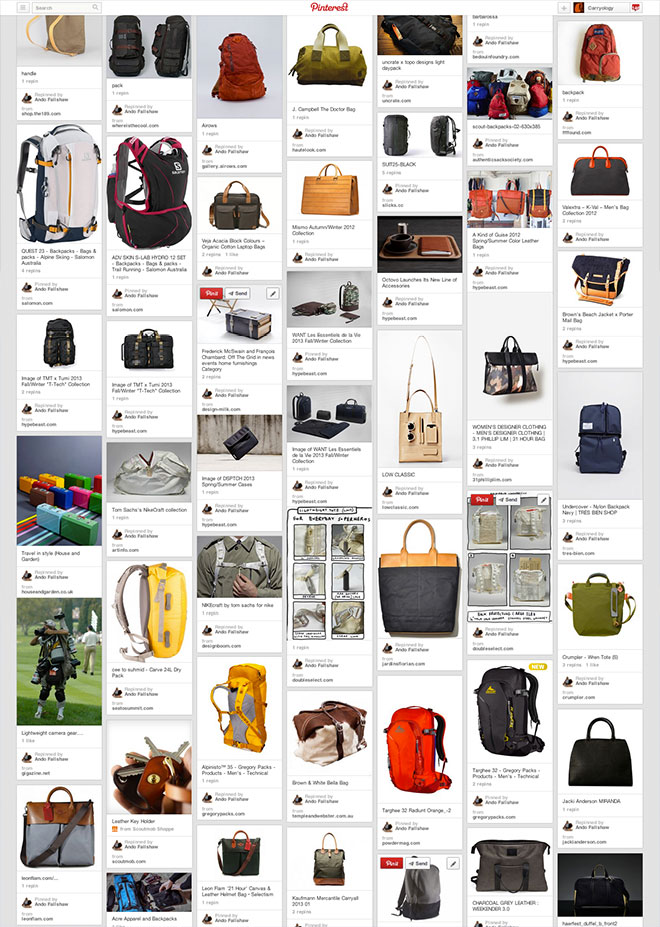![Heimplanet Monolith Daypack]()
What’s it about?
Picture a Goruck GR1 that can tip over and double as a work satchel.
Heimplanet is an innovative tent company making a move into carry. They’ve designed a quiver of bags that all draw from a similar design palette.
The smallest bag in the Heimplanet Monolith series is this Daypack, which is undoubtedly inspired by the classic form and tactical vibe of Goruck packs. However it adds features, most notable of which is that it lets you spin the bag and add a shoulder strap for satchel carry. It also changes up the fabric, adds some front straps, and tweaks a few details to make it their own.
![Daypack, shoulder strap and pouches]()
Who it suits
The sweet spot of this bag is for the folk that travel a bit with work. You can fit all your work toys with a change of clothes, and yet present well in front of a client. When you’re done with your meetings, you can swing it around as a backpack and cover serious airport miles without doing your back in.
![Daypack in satchel mode]()
Who it doesn’t suit
This is a reasonably versatile bag, but it’s more about carrying work, travel and study tools than getting active, so don’t try and run marathons with it. And it’s well enough made, but it’s not going to handle the abuse that a Goruck can withstand, so don’t try and dodge bullets with it either.
Design
Looks
![Pouch and webbing]()
It’s black and rectangular – that’s the conservative bit. It then adds some tactical vibe with MOLLE webbing and some accessory pouch options. They include colored zip pulls if you want to spice it up a little, and a printed internal lining is standard.
![Zipper can snag on wrap label]()
![Printed lining]()
All up, it’s a reasonably attractive pack only let down by the genericness of high denier nylon (which some folk still love).
Materials
![High denier nylon]()
In our eyes, the single easiest way to improve this bag would be changing up the fabric. The Daypack runs with 840D nylon fabric (with a small panel of 1680D), all with what feels like a PU x2 backing. For the intended audience, this bag would probably work better in a coated canvas or a heathered polyester. I say that for two reasons…
a) High denier nylon is kinda 2003.
b) This high denier nylon is lacking structure.
The 840D has a loose weave, which means it lacks the structure that would keep the bag open and up where you need it. With only a very light PU backing, the backing is not really helping here.
![Open and closed]()
The plus to this fabric? It looks ‘travel’, it holds up pretty well to abrasion, and the soft drape means this pack sits quite well when empty.
Construction
Generally solid, although the stitching isn’t locked off super tight, so you get a few thread-ends saying hi after harder wear. They didn’t unravel further, so a quick lick with a flame fixes them, but it could be tighter.
![High denier nylon exterior and webbing]()
Hardware
The titanium G-hooks are a nice touch, which keeps weight down, durability high, and adds some handy options (like slinging a jacket on the front panel).
![Titanium G-hooks]()
There’s not much plastic to break, or hard bits to clang or weigh you down, so the whole bag feels quite light and neat.
Features
Transformer action
More backpacks should offer a swap to landscape. No matter what backpack you choose, it’s going to struggle to look appropriate with a suit. Simply swapping the bag to a horizontal shoulder carry radically improves your ability to look sharp when you need to.
![Unhooking straps]()
The transforming between backpack and shoulder bag works okay enough with the Heimplanet. You unhook the straps, push them behind the back panel, and close a zip. You then slip the shoulder strap G-hooks through some loops and you’re ready. It doesn’t have the elegance of the Qwstion approach, but each final stage is well resolved.
![Straps tucking in back panel]()
The shoulder strap doesn’t have a perfect home, but I found keeping it behind the back panel worked well enough.
It just misses a couple of those next level tricks for making the most of the transforming concept. For instance, I’d love to see a smart place for the shoulder strap to live when in backpack mode. Heck, I’d love to see the shoulder strap double as a great waist belt (which could be tucked away) when in backpack mode. Perhaps they’ll get that for next revision…
![Back view]()
It doesn’t actually do this with the waist belt, but it should…
Pouches
![Pouches]()
The optional pouches are not quite resolved for my liking. They are a little heavy and overly structured. They’re a touch fiddly to attach. But mostly they look a little odd stuck on the front or side of the pack. They just don’t integrate into the silhouette as well as some others do.
![Monolith Daypack with pouches attached]()
I also found myself wishing that the pouches could attach to the inside of the pack for when I wanted to clean up the silhouette, but they don’t have a home within the internals (short of being shoved inside).
![Wishing]()
It doesn’t actually do this, but it should…
Performance
Comfort
It’s quite a comfortable pack for travel and business needs. The laptop sits against your back, so you can’t arch nicely while riding, but it’s fine for standard duty.
![Side view]()
There’s a wonderful lack of airmesh (yay for scratch-free), and the straps are well padded.
![Padded straps]()
Space & Access
There is no doubt that this bag has been designed with work travel in mind. Your laptop slips out easily even when the bag is full. There are some nice internal pockets for organising toiletries or work bits. And the size and shape easily accommodate airplane storage restrictions.
![Laptop section]()
The side access zip is great for getting to your laptop when moving through security or setting up for your day’s work. A 15″ laptop is the largest it will fit, and this takes a touch of alignment to get in, but it works smoothly enough.
![Laptop in Daypack]()
Unfortunately the internal pockets work better in vertical backpack mode than horizontal satchel mode, but that’s only a small thing, and you can get at them well enough.
The tuck-away front straps are a nice way to haul an oversize jacket or random purchase, and the low profile G-hooks mean you don’t feel them when tucked away.
Weatherability
It’s fine for a light shower, with a water-resistant zipper covering the laptop zip, and good storm flaps over the main zipper. It’s certainly not for torrential downpours though.
Value
The Daypack is €170 (~US$230), plus around €30 per pouch. That means it’s slipping under the $295 of a Goruck GR1 (or $275 for the sexy new SK26), but not yet cheap on a global scale.
Does that represent value? For me, the fabric and construction quality need to be nailed before that’s good value. The rest of the components are dialled for that price.
![Top grab handle]()
Other bags to check
The Goruck range needs to be on your radar. The GR1 is the most obvious comparison. You’ll miss out on the shoulder bag conversion, but you’ll get nicer fabric and more bomber construction.
The Qwstion Daypack pulls a similar transformer trick, but with a slightly more fashion sensibility.
Thule has a similar design vibe and fabric choices, but at a cheaper price.
And then for a little more design flare, Cote&Ciel are totally rocking my boat at the moment.
![Back panel]()
Verdict
This is a great format for a work and travel bag. It can pass between work and play functions smoothly, looking good in most environments. The rectangular silhouette fits work gear well, and the size suits short work trips nicely.
It does though feel like the first release for a brand. There is not yet enough magic and insight brought to the piece, missing a few of the really nice opportunities to leave a mark with your emotions. I’d love to see a nicer fabric offered, some better consideration to the poetry of transformation, and a little more care taken in the construction and stitch work.
Having said all that, the Heimplanet Daypack is already a very useful bag that shows we should expect some nice things from this brand going forwards.
PS: Check out these guys’ tents. They’re the shelter of choice for Red Bull nutters around the globe.
-
